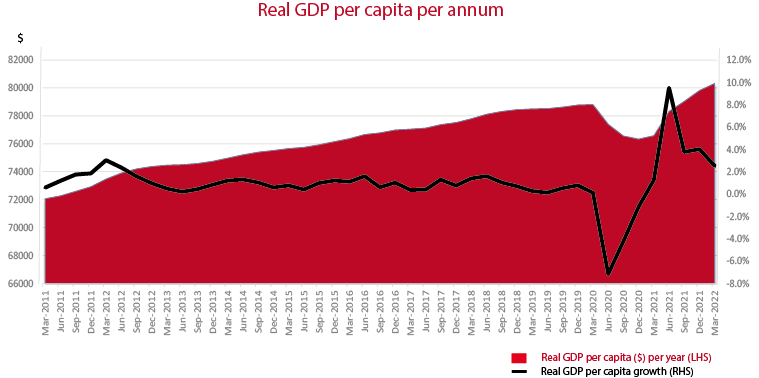Application exercise 6e:

- The value of real GDP per capita since March 2011 has trended up from approximately $72,000 per person per annum to slightly more than $80,000 per person in March 2022. This implies that the material living standard of Australians, on average, has increased over the past 10 years (despite the fall over 2020-21 due to the Covid-19 induced recession).
- Over 2020, Australia experienced a recession due to impacts of Covid-19. This meant that the real value of GDP declined for two consecutive quarters, with a huge reduction in real GDP during the first half of the year. Despite the fact that population growth over the same period was negligible (due to the closure of borders), the huge decline in real GDP (and national income) meant that the incomes earned by Australians on average declined, leading to a reduced ability to purchase goods and services and a decline in material living standards. [This was mitigated by the huge stimulus measures introduced governments which eventually helped to raise disposable incomes and boost living standards.]
- Over these periods, the dollar value of real GDP per capita (red area) continued to grow, albeit at a much slower rate, which is evidenced by the growth of real GDP per capita (black line) falling toward zero in 2013. Note that when the black line falls towards zero, then read area flattens, which means that there is little or no change in the dollar value of real GDP per capita. Of course, when the black line falls below zero (as was the case in 2020) then the red area must be falling. This is another way of saying that when the ‘value’ of real GDP per capita actually falls (e.g from above $78,000 in early 2020 to towards $76,000 by late 2020), it causes the rate of growth in real GDP per capita to be negative.
